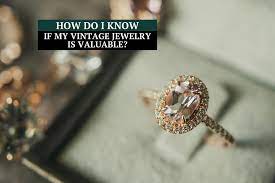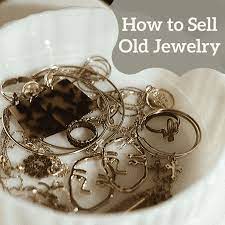
8 Ways To Tell If Your Vintage Jewelry Is Worth More Than You Think
- Roger
- 0
- on Nov 17, 2022
8 Ways To Tell If Your Vintage Jewelry Is Worth More Than You Think
Vintage jewelry is more than just old fashion accessories – many pieces can be valuable antiques. But how can you tell if your vintage jewelry is worth more than you think?
Here are 8 ways to tell if your vintage jewelry is valuable:
1. Look for hallmarks and signatures. Most valuable vintage jewelry will have a hallmark or signature from the designer or manufacturer. If you see a piece with a well-known name, it’s likely to be more valuable.
2. Check the condition of the piece. Generally, the better condition a piece of vintage jewelry is in, the more valuable it will be. However, there are some exceptions – particularly with antique pieces, which may be valued for their age and rarity regardless of condition.
3. Consider the materials used. Gold, silver, and diamonds are all precious metals that add value to vintage jewelry. Pieces that feature multiple different precious metals are usually worth more as well.
4. Look for unique design elements. Vintage jewelry that features intricate details or unique design elements is often more valuable than simpler pieces.
5. Determine the era of the piece. Older pieces of vintage jewelry tend to be more valuable than recent ones, so if you can narrow down the era in which a piece was made, it will be easier to estimate its value.
6 . Consider who owned the piece previously. If a piece of vintage jewelry was once owned by a celebrity or other famous person
how to make resin jewelry without molds
If you’re looking to make some beautiful resin jewelry but don’t want to use molds, there are still plenty of ways to do it! Here are a few tips and tricks on how to make stunning jewelry pieces without using any molds:

1. Use Silicone Molds: You can find silicone molds in various shapes and sizes at your local craft store, or online. They’re perfect for pourable resins, like epoxy resin. Simply pour your resin into the mold, let it set, and then pop out your piece when it’s hardened.
2. Use Packing Tape: If you don’t have any silicone molds on hand, packing tape can be used as a makeshift mold! Simply cover your work surface with packing tape, and then pour your resin onto the tape. Once it’s hardened, peel off the tape, and voila – you’ve got yourself a unique resin piece!
3. Use Cookie Cutters: Cookie cutters make great molds for resin jewelry! Just make sure to line them with parchment paper or release agent first, so that the resin doesn’t stick to the cutter. Pour your resin into the cutter, let it set, and then pop out your shape when it’s hardened.
4. Be Creative with Household Objects: There are all sorts of household objects that can be used as molds for resin jewelry – from shot glasses to jar lids! Get creative and see what you can come up
how does an ultrasonic jewelry cleaner work
An ultrasonic jewelry cleaner uses high-frequency sound waves to create cavitation in a liquid. This cavitation creates tiny bubbles that gently scrub away dirt, grime, and build-up on your jewelry. Ultrasonic cleaners are safe for most jewelry, including gold, silver, platinum, diamonds, and gemstones.
Vintage jewelry can be worth more than you think – an ultrasonic jewelry cleaner can help you clean it and preserve its value.
If you have any vintage jewelry, it is important to know how to properly clean and care for it. An ultrasonic jewelry cleaner is a great way to clean your vintage jewelry without damaging it. Ultrasonic cleaners use high-frequency sound waves to create vibrations that loosen dirt and grime from the surface of your jewelry. They are safe to use on most types of jewelry, including delicate pieces. Be sure to read the instructions carefully before using an ultrasonic cleaner, and always test it on a small area first.
An ultrasonic jewelry cleaner uses high-frequency sound waves to clean jewelry without damage.
An ultrasonic jewelry cleaner is a specialized type of cleaning device that uses high-frequency sound waves to clean jewelry without causing any damage. These cleaners are often used by jewelers and other professionals who need to clean delicate or sensitive items, and they can be very effective at removing dirt, grime, and another build-up from all types of materials.
Ultrasonic cleaners are safe for most jewelry, but it’s always a good idea to check with a professional before using one.
Ultrasonic cleaners use sound waves to create cavitation, which is the formation and collapse of tiny bubbles in a liquid. This action can be used to clean jewelry by breaking up dirt and grime that is stuck on the surface.
Jewelry made with delicate or porous stones, like pearls or opals, should not be cleaned with ultrasonic cleaners as sound waves can damage these materials. In general, it is best to avoid using ultrasonic cleaners on jewelry that has been repaired or restored as well.
Ultrasonic cleaners can save you time and hassle when cleaning vintage jewelry – they’re a great way to keep your pieces looking their best.
An ultrasonic cleaner is a device that uses sound waves to clean jewelry. The waves create a cavitation effect, which means that tiny bubbles form and collapse on the surface of the jewelry. This action helps to loosen dirt and grime, making it easy to wipe away.
Ultrasonic cleaners are safe to use on most types of vintage jewelry, including gold, silver, and costume pieces. However, you should avoid using them on delicate or porous stones like pearls or opals. To be extra cautious, you can test the cleaner on a small area of the jewelry before cleaning the entire piece.